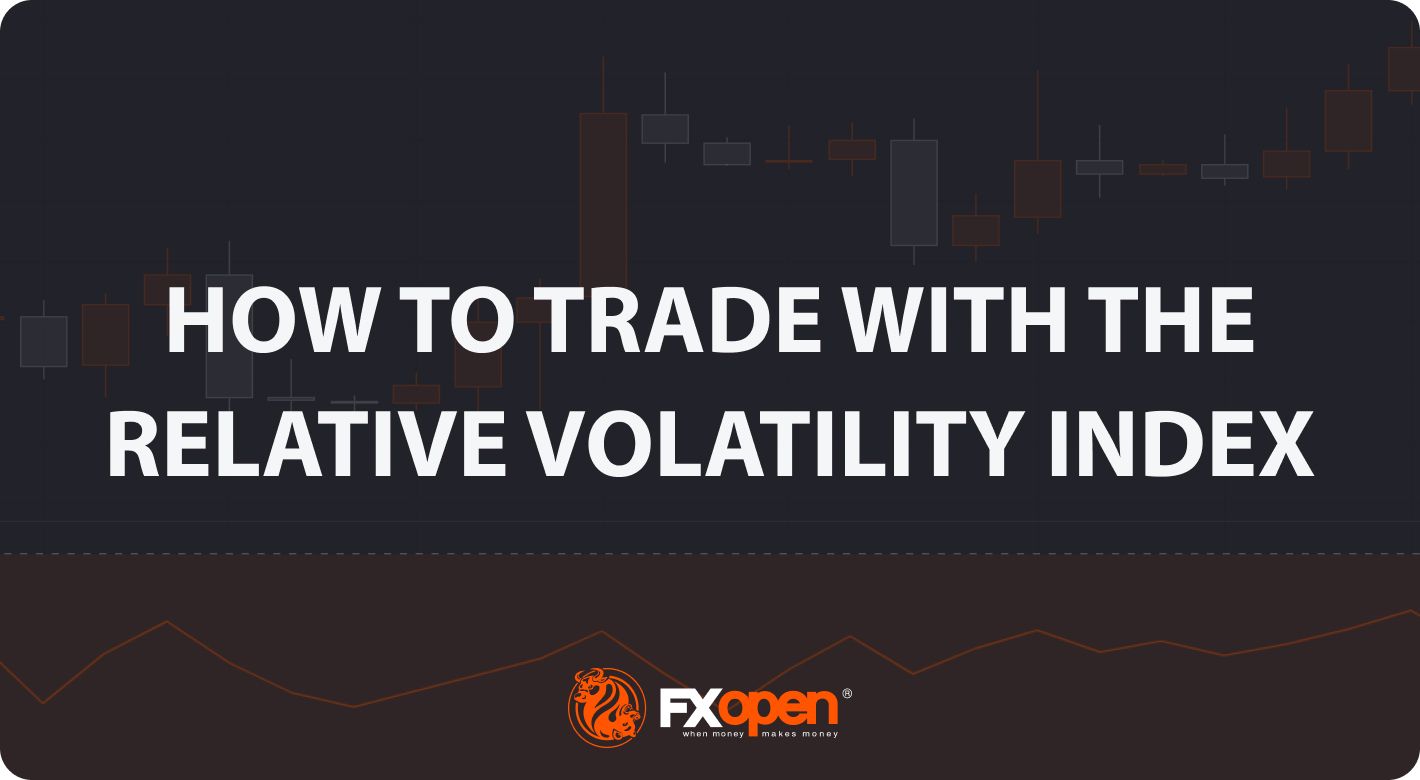FXOpen

Understanding volatility is crucial for successful trading. One tool often used for this purpose is the Relative Volatility Index. This article demystifies this indicator, delves into its formula and calculations, explores how to read and trade with it, and compares it with the relative strength index.
What Is the Relative Volatility Index Indicator?
The Relative Volatility Index (RVI) indicator is a valuable technical analysis tool that helps traders determine the direction of a given asset's volatility. Devised by Donald Dorsey, the RVI focuses on the standard deviation of high and low prices over a specified period, usually 10. Put simply, a higher value suggests strong volatility to the upside, while a lower reading indicates volatility to the downside.
Relative Volatility Index Formula and Calculations
The calculation for the Relative Volatility Index is computed by using the standard deviation of the high and low prices over a specific period. Its formula is:
RVI = (Standard Deviation of Up Periods / Standard Deviation of Down Periods) * 100
Here's the formulation for the Relative Volatility Index works:
- Identify 'up' and 'down' periods/candles. An 'up' period is when the closing price is higher than the previous period’s close, while a ‘down’ period is the opposite.
- Calculate the standard deviation of the 'up' and 'down' days over the chosen period.
- Divide the standard deviation of 'up' periods by the standard deviation of 'down' periods, then multiply by 100 to get the RVI.
The result is a line that looks similar to the relative strength index (RSI), with similar bounds for overbought and oversold levels (normally set at 80 and 20, respectively).
You may be asking, ‘Where can I use the Relative Volatility Index for free?’ Right here! You’ll find it on FXOpen’s very own TickTrader platform.
How to Trade with the RVI
Reading and trading with the RVI involves understanding its implications for market variance and its direction. The RVI oscillates around the value of 50. If it crosses above 50, it implies increased volatility to the upside, and prices are likely to rise, and vice versa. As mentioned, moves above the overbought and oversold zones at 80 and 20 can indicate a potential reversal may be inbound.
In terms of trade execution, traders might consider buying when the indicator crosses above 50 from the oversold region, projecting further bullishness. Meanwhile, selling might be considered when the line crosses below 50 from the overbought region, expecting a price decrease.
RSI vs RVI
The RSI and RVI are both widely used technical indicators within the trading realm, but they serve different purposes and provide distinct insights into market conditions.
The RSI, a momentum oscillator, gauges the velocity and variation of price shifts on a scale ranging from 0 to 100. It is used primarily to detect overbought or oversold conditions in a market. It does not take into account the directionality of volatility, which is where the RVI steps in. On the other hand, the RVI is an oscillator that quantifies the direction of fluctuations rather than momentum.
In essence, while both the RSI and RVI use similar scaling and may appear alike on a chart, they provide different types of information. The RSI is more focused on the strength of price movements, whereas the RVI zeroes all about the direction and dispersion of price movements. Depending on the trading strategy and market conditions, traders may use one or both to maximise their trading potential.
The Bottom Line
In summary, the RVI is an interesting tool used to gauge the direction and volatility of a given market. Its similarities with the RSI mean the two can be combined for extra clarity and trade confirmation. Moreover, the indicator may provide incorrect signals; therefore, traders always use it in conjunction with other technical analysis tools. If you’re ready to start trading with the RVI, you can open an FXOpen account to use it across 600+ markets. Happy trading!
This article represents the opinion of the Companies operating under the FXOpen brand only. It is not to be construed as an offer, solicitation, or recommendation with respect to products and services provided by the Companies operating under the FXOpen brand, nor is it to be considered financial advice.
Stay ahead of the market!
Subscribe now to our mailing list and receive the latest market news and insights delivered directly to your inbox.








